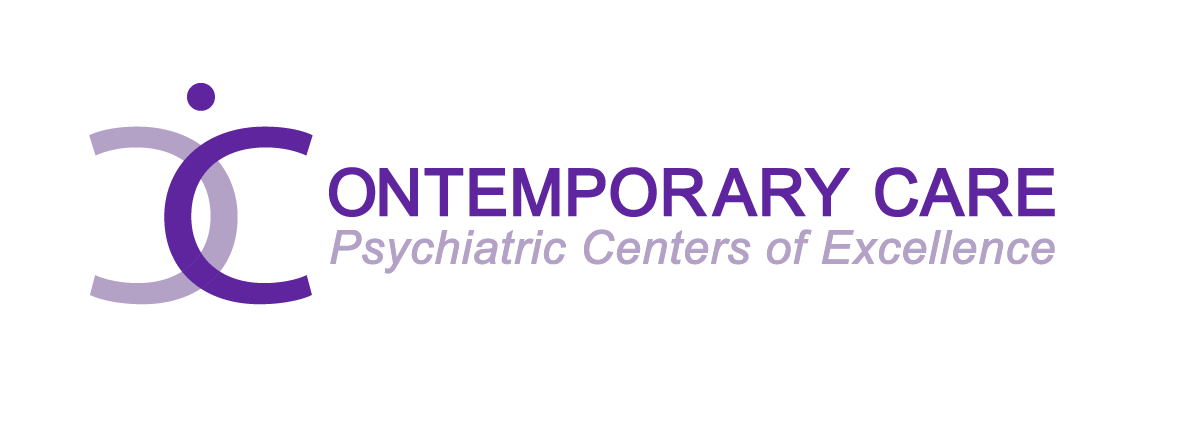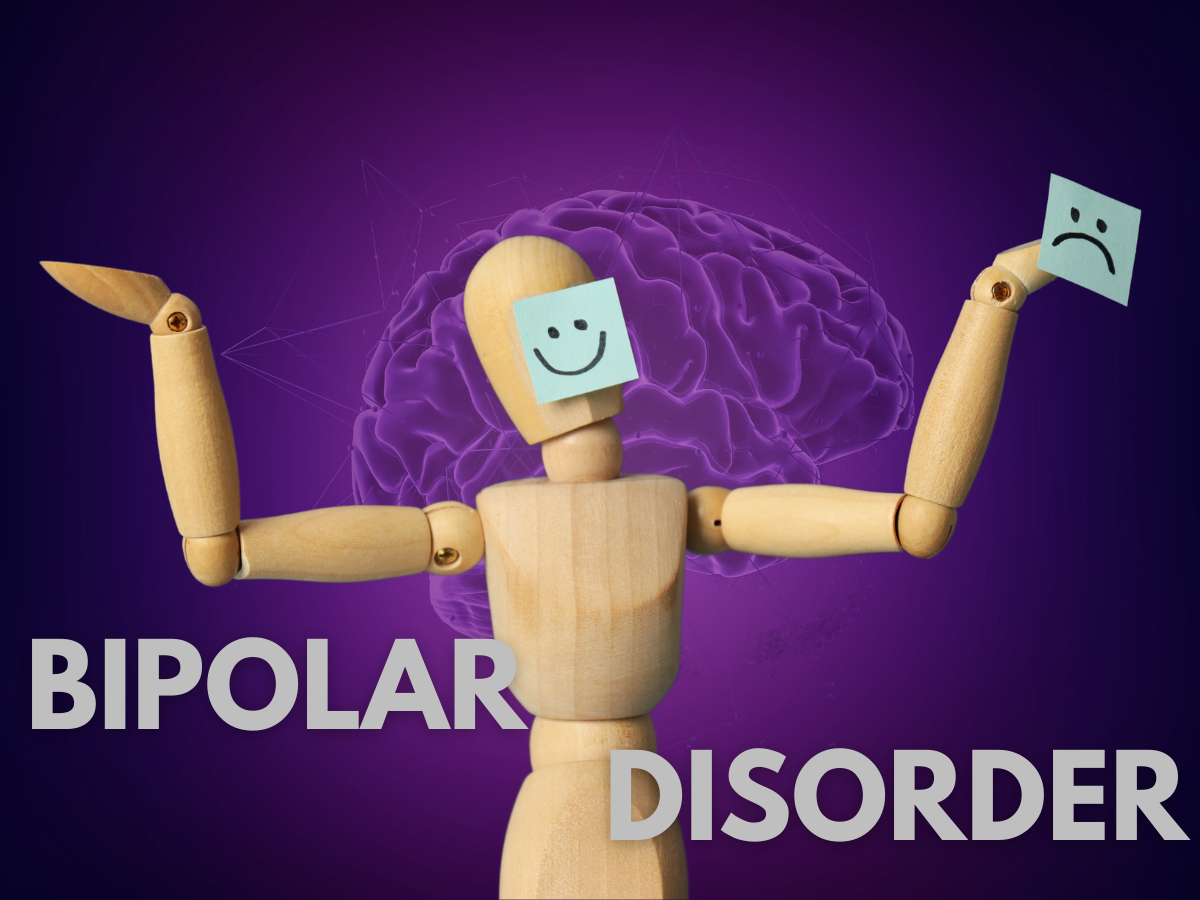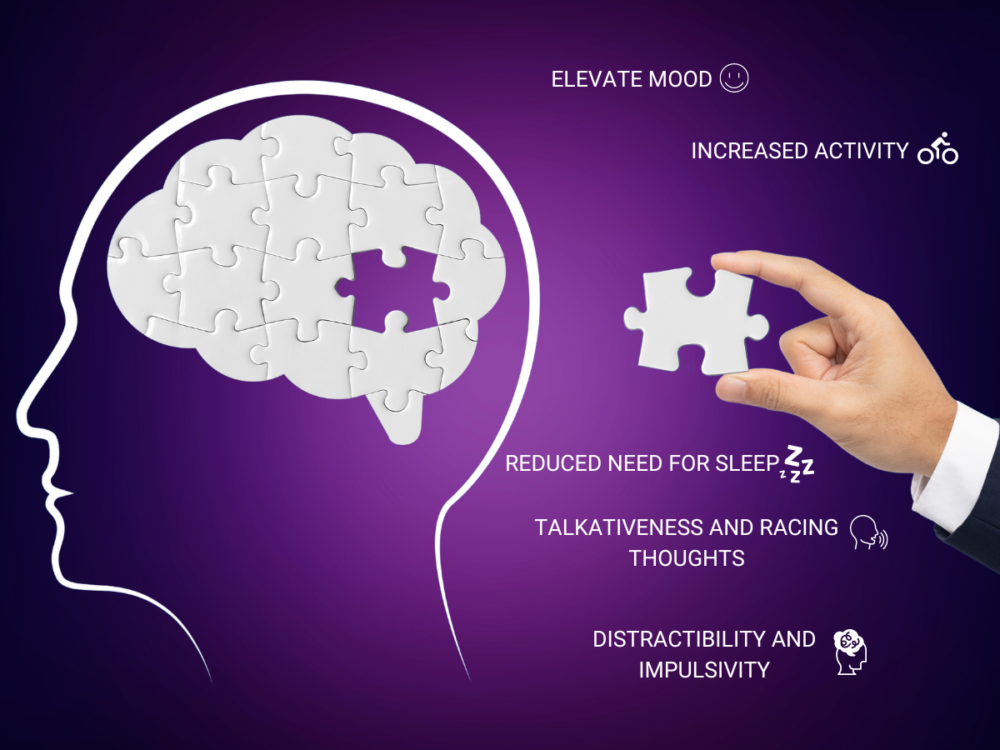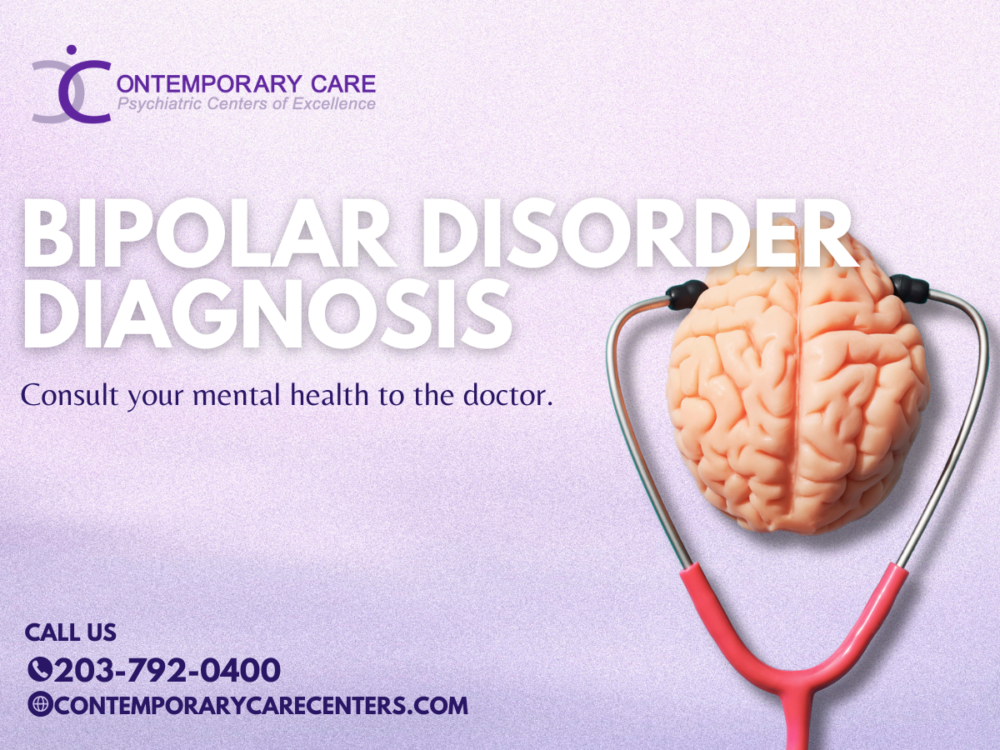What Is Bipolar Disorder? Bipolar disorder is a complex and challenging brain disorder described by huge changes in temperament, energy levels, and overall functionality. People with bipolar experience serious emotional states that manifest during particular periods known as mood episodes, which can keep going for days to weeks.
These episodes are classified as either hyper/hypomanic, described by a strangely raised or crabby mood, or burdensome, portrayed by significant reasons. It’s essential to take note that people with bipolar likewise have times of neutral mood.
Unlike common mood fluctuations experienced by individuals without bipolar, those with the condition go through outrageous changes in behavior and frequently battle with daily routine and social interactions during the episodes. Bipolar disorder can significantly affect relationships, work, and academic performance.
However, with proper treatment, people can deal with their side effects and lead satisfying lives. Let’s dive deeper to gain complete knowledge about the pathophysiology of Bipolar Disorder disease and also the treatments proposed.
Prevalence of Bipolar Disorder
Bipolar disorder encompasses three main diagnoses: bipolar I, bipolar II, and cyclothymic disorder. It regularly runs in families, with 80 to 90 percent of people having an overall impact of bipolar disorder or depression.
While the specific reasons for bipolar stay confusing, it is believed to result from an irregularity of brain chemicals, leading to dysregulated brain action. Ecological factors like pressure, sleep disturbance, and substance misuse can likewise set off mood episodes in vulnerable people.
The beginning of bipolar issues usually happens around the age of 25, even though it can develop at whatever stage in life. Individuals with bipolar I frequently experience comorbid mental health conditions, for example, nervousness problems, substance use problems, or consideration shortfall/hyperactivity disorder (ADHD). Besides, people with bipolar I problems face a significantly higher risk of self-destruction compared to the general population.
Statistics provide insight into the prevalence and impact of bipolar disorder in the United States. According to the National Comorbidity Survey Replication (NCS-R), approximately 2.8% of U.S. adults experienced bipolar disorder in the past year. The prevalence was similar between males and females, affecting 2.9% and 2.8%. Throughout their lives, an estimated 4.4% of adults will experience bipolar disorder. Among those with bipolar disorder in the past year, the majority (82.9%) experienced serious impairment in functioning.
In adolescents aged 13-18, the lifetime prevalence of bipolar disorder is estimated to be 2.9%. Females in this age group exhibit a slightly higher prevalence (3.3%) compared to males (2.6%). Additionally, 2.6% of adolescents with bipolar disorder experience severe impairment in functioning, as determined by the Diagnostic and Statistical Manual of Mental Disorders, Fourth Edition (DSM-IV) criteria.
These insights highlight the huge burden of bipolar disorder on people, families, and society overall, featuring the significance of early discovery, appropriate findings, and successful treatment Medications.
Characteristics of Bipolar Disorder
Bipolar disorder is a complex mental health condition characterized by significant shifts in mood, energy, and activity levels. Here are the key characteristics describing the pathophysiology of bipolar disorder:
Bipolar I Disorder: This kind of bipolar issue is recognized by the presence of something like one undeniable hyper episode, which might cause stamped hindrance in friendly or occupation-related working, and frequently joined by burdensome episodes. It influences all kinds of people similarly.
Bipolar II Disorder: Unlike Bipolar I, Bipolar II is described by significant burdensome episodes alongside something like one hypomanic episode, which is less extreme than full mania yet essentially influences everyday working. The frequency of Bipolar II problems is to some degree higher in females.
Substance-/Medication-Induced Bipolar Disorder: This type of bipolar happens when mode disturbance consistent with mania develops during or not long after exposure to substances like cocaine or corticosteroids. Intoxication or withdrawal from these substances can set off side effects looking like bipolar problems.
Bipolar and Related Disorder Due to Another Medical Condition: In some cases, mood disturbance steady with mania can be credited to another medical condition, like Cushing syndrome or horrible brain injury. These mood disturbances influences don’t happen only during an episode of delirium.
Unspecified Bipolar Disorder: This classification includes disorders with clear bipolar elements that don’t meet the particular standards for different sorts of bipolar problems. It envelops situations where side effects are present but don’t fit completely into the characterized classifications of Bipolar I, II, or related disorders.
Bipolar Disorder Symptoms
Like any other disease, bipolar also has some symptoms that need to be understood for early diagnosis. The depressive symptoms in adults and children are different from each other, the main ones are given below:
Symptoms in Adults:
Types of Bipolar Disorder:
- Bipolar I Disorder: Portrayed by somewhere around one hyper episode, possibly followed by hypomanic or significant burdensome episodes. Mania might prompt psychosis at times.
- Bipolar II Disorder: Includes at least one significant depressive episode and one hypomanic episode, however no hyper episode.
- Cyclothymic Disorder: Includes continuous times of hypomanic side effects and depressive side effects, enduring somewhere around two years
- Other Types: Bipolar and related issues can be initiated by specific substances or medical conditions.
Bipolar II Disorder Distinction:
- Not a milder form of bipolar I disorder, but a separate diagnosis.
- Individuals with bipolar II disorder may experience longer periods of Depression, leading to significant impairment.
Onset and Variability:
- Typically diagnosed in teenage years or early 20s.
- Symptoms vary among individuals and can change over time.
Symptoms in Children and Teens:
Identification Challenges:
- Side effects can be recognized from typical emotional episodes, stress responses, or other psychological issues.
- Mood swings can be rapid during episodes.
Prominent Signs:
- Severe mood swings that may be different from their normal patterns.
- Particularly major depressive or manic/hypomanic episodes, although the pattern may be different from adults.
- Some children may experience periods without mood symptoms between episodes.
Episodes in Bipolar Disorder
Mania and hypomania are two primary mood episodes in bipolar disorder, different in severity and impact on daily routine. Mania is the more dangerous form, often leading to significant disruptions in various aspects of life, including work, relationships, and social activities. It can even result in psychotic symptoms, which are needed to be cured through hospitalization. Hypomania, on the other hand, is less severe but still noticeable, causing disruptions although to a lesser extent.
Manic and Hypomanic Episodes
Both manic and hypomanic episodes manifest with several symptoms, including:
- Elevated Mood: People might feel strangely upbeat, excessively energetic, or uncommonly confident, often encountering a feeling of rapture.
- Increased Activity: There’s a surge in energy levels, leading to heightened activity, restlessness, or agitation.
- Reduced Need for Sleep: Sleep patterns are disturbed, with individuals requiring less sleep without feeling tired.
- Talkativeness and Racing Thoughts: Speech becomes rapid and verbose, and thoughts race uncontrollably.
- Distractibility and Impulsivity: Attention is easily diverted, and decision-making becomes impaired, leading to risky behaviors such as overspending or engaging in unsafe sexual activities.
Major Depressive Episode
In contrast, a major depressive disorder episode is portrayed by significant misery, loss of interest or pleasure in activities, and critical hindrance in day-to-day working. The side effects of a major depressive episode include:
- Depressed Mood: Persistent feelings of sadness, hopelessness, or emptiness, which may manifest as irritability in children and adolescents.
- Anhedonia: Marked loss of interest or pleasure in previously enjoyed activities.
- Changes in Appetite and Sleep: Appetite and sleep patterns are disturbed, leading to either weight loss or gain and insomnia or hypersomnia.
- Psychomotor Changes: Restlessness or slowed behavior may be observed.
- Tiredness: Persistent feelings of tiredness or loss of energy, even after rest.
- Negative Thoughts and Feelings: Excessive guilt, feelings of worthlessness, and difficulty concentrating or making decisions.
- Suicidal Ideation or Behavior: Thoughts of death or suicide may be present, and in severe cases, suicide attempts may occur.
Additionally, the pathophysiology of bipolar disorder may present with other features such as anxious distress, psychotic symptoms, or rapid cycling between mood episodes. Symptoms can also vary in intensity and duration, and may even fluctuate with changes in seasons or during pregnancy.
Recognizing the diverse manifestations of bipolar disorder and understanding the distinct features of each mood episode is essential for accurate diagnosis and tailored treatment interventions to effectively manage the condition and improve the quality of life for individuals affected by this complex disorder.
Complications in Bipolar Disorder
Bipolar disorder, if left untreated, can unfurl a plethora of serious complications, significantly impacting various aspects of an individual’s life. These complications can range from personal struggles to societal challenges, casting a shadow over one’s well-being and stability.
- Problems related to drug and alcohol use: People struggling with bipolar disorder frequently resort to substance maltreatment as a survival technique. Self-prescription through medications or liquor can worsen mood swings, trigger hyper or depressive episodes, and stop the effectiveness of prescribed medicines. Substance abuse not only worsens the symptoms of bipolar disorder but also increases additional health risks.
- Suicide or suicide attempts: The risk of self-destruction poses a potential threat to people fighting bipolar. The super emotional ups and downs normal for the condition can raise sensations of sadness and depression, prompting suicidal thoughts or attempts. Without timely intervention and suitable management, the risk of suicide remains alarmingly high among those with bipolar disorder.
- Legal or financial problems: Impulsive behavior during manic episodes can lead to wild spending, legal troubles, or financial mismanagement. Individuals may find themselves entangled in legal issues due to impulsive actions, such as excessive spending, substance-related offenses, or engaging in risky behaviors. Financial instability and legal entanglements further compound stress and disrupt one’s life.
- Damaged relationships: The erratic nature of bipolar disorder can disturb relationships with family, friends, and colleagues. Fluctuating moods, unpredictable behavior, and communication challenges may lead to misunderstandings, conflicts, and alienation. Maintaining stable and healthy relationships becomes a formidable task for individuals struggling with the complexities of bipolar disorder.
- Poor work or school performance: Bipolar disorder can significantly diminish one’s ability to function effectively in academic or professional settings. Episodes of depression may result in absenteeism, decreased productivity, or inability to meet deadlines. Conversely, manic episodes might foster overconfidence, distractibility, and impulsivity, undermining work or academic performance.
Apart from these complications, people with bipolar disorder often contend with other co-occurring conditions that complicate their overall management and treatment results. These include:
- Anxiety disorders: Anxiety disorders also coexist with bipolar disorder, exacerbating symptoms and intensifying emotional distress.
- Eating disorders: Disturbed eating patterns and body image issues may accompany bipolar disorder, posing additional challenges to mental and physical well-being.
- Attention-deficit/hyperactivity disorder (ADHD): ADHD often overlaps with bipolar disorder, amplifying difficulties in focus, impulse control, and emotional regulation.
- Alcohol or drug problems: Substance abuse disorders frequently co-occur with bipolar disorder, complicating treatment strategies and exacerbating symptoms.
- Physical health problems: Individuals with bipolar disorder may also grapple with various physical health issues, such as heart disease, thyroid disorders, headaches, or obesity. These comorbidities necessitate comprehensive treatment approaches that address both mental and physical health concerns.
Diagnosing Bipolar Disorder
Diagnosing bipolar can be difficult, as it requires an exhaustive assessment and evaluation of different factors, including the patient’s set of experiences, clinical details, and research center tests. The Diagnostic and Statistical Manual of Mental Disorders, Fifth Edition (DSM-5), gives standards for diagnosing bipolar II issues, which include encountering at least one hypomanic episode and one significant depressive episode without a hyper episode. This is the way the analysis is normally approached:
Clinical Evaluation:
- Mental Status Assessment: This includes surveying different parts of the patient’s psychological state, including appearance, mindset, thought content, discernment, perception, judgment, knowledge, and hazard factors like self-destructive or violent ideation.
- Appraisal of Side Effects: The clinician evaluates the presence and seriousness of side effects related to bipolar, like times of raised or bad-tempered behavior (hypomanic episodes) and depressive episodes. Side effects might incorporate self-esteem, diminished need for rest, racing thoughts, increased activity or agitation, and engagement in risky behaviors during hypomanic episodes. Significant depressive episodes include side effects like discouraged temperament, anhedonia, changes in craving or sleep, exhaustion, sensations of uselessness or responsibility, and self-destructive ideation.
- Physical Health Assessment: Since certain medical conditions can copy or fuel the side effects of bipolar problems, assessing the patient’s actual health is fundamental. This incorporates evaluating fundamental signs, directing a neurological assessment, and ruling out underlying medical conditions through laboratory tests.
Laboratory Testing:
- Baseline Tests: Laboratory studies help dig out other potential causes of symptoms and provide baseline results before starting treatment. Tests commonly done include complete blood count (CBC), erythrocyte sedimentation rate (ESR), fasting glucose levels, electrolyte levels, thyroid hormone levels, liver and lipid panel, creatinine, blood urea nitrogen (BUN), and substance/alcohol screening.
- Additional Tests: Depending on the patient’s condition, additional tests may be necessary. These may include urinary copper levels, antinuclear antibody testing, HIV testing, and electrocardiography. Older patients and those on antidepressant therapy may require electroencephalography (EEG) or MRI scans.
Secondary Cause Evaluation:
In some cases, symptoms similar to bipolar disorder may be due to underlying medical conditions or medications. Characteristics suggesting a possible secondary cause include older age at symptom onset, abnormal vital signs or neurological findings, recent changes in health status or medications, unusual response to treatment, and no personal or family history of psychiatric disorders. Initial evaluation for secondary causes typically involves a urine drug screen, CBC with blood smear, comprehensive metabolic panel, thyroid function tests, and assessment of vitamin B and folate levels.
Other Cause detecting Strategies
Identifying the reasons for bipolar disorder (BD) and unipolar depression requires a multi-layered approach because of its complex etiology, including hereditary, epigenetic, neurochemical, and natural elements. Here are a few approaches for distinguishing these causes:
- Advanced Genetic Studies: While various genetic loci have been used in BD, ongoing exploration can dig further into the genetic makeup of people with BD. This can include entire genome sequencing, genome-wide association studies (GWAS), and polygenic risk score investigations to recognize explicit genetic variation related to the issue. Also, investigating gene-environment interactions can give experiences into how hereditary inclinations communicate with ecological factors to build defenselessness to BD.
- Epigenetic Investigations: Epigenetic modifications, such as DNA methylation and histone acetylation, can influence gene expression without altering the underlying DNA sequence. Investigating epigenetic changes in individuals with BD compared to healthy controls may reveal patterns associated with the disorder. Longitudinal studies tracking changes in epigenetic markers over time in response to environmental factors could elucidate the role of epigenetics in BD development and progression.
- Neurochemical Profiling: In addition to dopamine and serotonin, other neurotransmitter systems may contribute to the pathophysiology of BD. Utilizing advanced neuroimaging techniques, such as positron emission tomography (PET) and magnetic resonance spectroscopy (MRS), researchers can quantify neurotransmitter levels and investigate their alterations in individuals with BD. This approach may uncover aberrant neurochemical profiles associated with the disorder and guide the development of targeted treatments.
- Environmental Risk Factors: Beyond childhood maltreatment and stressful life events, further exploration of environmental factors implicated in BD is warranted. Epidemiological studies can identify additional environmental risk factors, such as exposure to toxins, dietary factors, and circadian rhythm disruptions, which may contribute to BD susceptibility. Integrating environmental data with genetic and neurobiological findings can provide a more comprehensive understanding of the disorder’s etiology.
- Biomarker Discovery: Biomarkers are objective measures that reflect pathological processes underlying a disease. By identifying reliable biomarkers for BD, such as neuroimaging markers, peripheral blood markers, or cognitive performance measures, clinicians can improve diagnostic accuracy, monitor disease progression, and assess treatment response. Large-scale biomarker discovery initiatives, coupled with machine learning algorithms, hold promise for identifying robust biomarker signatures associated with BD.
- Systems Biology Approaches: Adopting a systems biology perspective can elucidate the complex interactions between genetic, neurobiological, and environmental factors contributing to BD. Integrative analyses that combine omics data (genomics, transcriptomics, proteomics, metabolomics) with clinical and epidemiological data can uncover dysregulated pathways and networks implicated in BD pathogenesis. Systems biology models can provide a holistic view of the disorder and facilitate the identification of novel therapeutic targets.
Prevention
Preventing bipolar disorder includes a blend of early intervention, mindfulness, and adherence to treatment plans. While there’s no secure strategy to avoid bipolar disorder, taking proactive measures can essentially relieve its effect on one’s life.
The foundation of prevention lies in immediately seeking treatment at the earliest signs of psychological issues. Perceiving the early indications of bipolar problems or related conditions is pivotal. These signs could include shifts in temperament, energy levels, sleep patterns, or changes in behavior. By addressing these side effects, people can prevent the acceleration of minor issues into full-blown episodes of mania or sadness.
Moreover, individuals diagnosed with bipolar disorder can adopt various strategies to manage their condition effectively and prevent relapses:
- Monitoring Warning Signs: Consistently focusing on warning signs and triggers is essential. This mindfulness engages people to perceive the beginning of an episode and take timely action. Including relatives or dear friends in this process can offer extra help and knowledge of behavioral changes.
- Avoiding Substance Abuse: Avoiding alcohol and drugs is essential for managing bipolar disorders. Substance misuse can worsen side effects and improve the probability of encountering mood disorders or episodes. By avoiding such substances, people can keep up with better stability and limit the risk of backsliding.
- Adhering to Medication Regimens: Taking prescribed medications as given by professionals is crucial in managing bipolar disorder. It’s normal for people to feel enticed to discontinue treatment, particularly during times of dependability. However, immediately stopping the prescription or adjusting the dose without clinical consultancy can result in unfriendly outcomes, including withdrawal impacts and a repeat of side effects. Consistent medication adherence is key to maintaining stability and preventing relapses.
- Engaging in Therapy and Support: Taking part in treatment sessions, whether individual or gathering-based, can be immensely helpful for people with bipolar conditions. Treatment gives a safe place to investigate considerations, feelings, and survival methods, assisting individuals with better dealing with their condition. Furthermore, support groups offer a feeling of oneness and understanding, lessening sensations of isolation and promoting overall well-being.
The pathophysiology of bipolar disorder, characterized by recurrent episodes of mania or hypomania and depression, can be challenging to manage. While mood stabilizers and Psychotherapy are commonly used treatments, other approaches may be beneficial, particularly for those who do not respond adequately to standard treatments or who experience specific symptoms or patterns. Here, we delve into various alternative treatments and strategies for managing bipolar disorder.
Other Treatment of Bipolar Disorders
There are a few other approaches and prevention strategies that people can use for treating bipolar disorder and to lead a good life managing the issue.
Electroconvulsive Therapy (ECT): ECT, although often associated with severe depression, has shown efficacy in treating both depression and acute manic episodes. It involves the induction of controlled seizures through electrical stimulation of the brain. While its precise mechanisms are not fully understood, ECT is thought to balance synapse movement and advance brain versatility, prompting mindset adjustment.
Phototherapy: Phototherapy, usually used to treat seasonal affective disorder (SAD), has shown efficacy in reducing depressive side effects related to bipolar disorder, whether occasional or nonseasonal. By presenting people with bright artificial light, phototherapy helps regulate circadian rhythms and moderate temperament unsettling influences. It can act as an independent treatment or as an assistant to pharmacotherapy.
Transcranial Magnetic Stimulation (TMS): TMS, a painless procedure that includes conveying magnetic pulses to different parts of the brain, has arisen as the best medication for treating depression. Recent evidence suggests its adequacy in bipolar depression also. By tweaking cortical excitability and upgrading brain connectivity, TMS can enhance depression side effects and balance out temperament in people with bipolar.
Education and Psychotherapy: Beyond pharmacological methods, educating patients and involving their support networks are important components of bipolar disorder management.
Individual Psychotherapy: Psychotherapy, like cognitive-behavioral therapy (CBT) or relational treatment, supplements pharmacotherapy by tending to maladaptive idea designs, enhances critical thinking abilities, and advances profound guidelines. It helps patients cope with stressors, manage interpersonal relationships, and integrate their illness into their identity.
Lifestyle Modifications and Behavioral Strategies: Empowering way of life modifications and carrying out social techniques can assist with settling mood and prevent relapse.
Risk Mitigation: Patients should be advised to avoid triggers such as stimulants and alcohol, prioritize adequate sleep hygiene to minimize sleep deprivation, and recognize early warning signs of relapse. For individuals prone to impulsive behaviors such as excessive spending or risky sexual behavior, practical measures such as giving control of money to someone in the family you trust, or teaching about the bad things that can happen from being too sexually active, can help prevent bad results.
By incorporating these mediations into a complete treatment plan customized to the individuals’ necessities, clinicians can enhance results and work on the personal satisfaction of patients with bipolar disorder.
If you are looking for information on the best treatment or the cure for bipolar disorder, visit the following website, https://contemporarycarecenters.com/. It provides all kinds of solutions to several mental problems, which includes therapy sessions for the pathophysiology of bipolar disorder. Secondly, you have the opportunity to learn from the experts on the specific therapy sessions that are delivered here at contemporary care centers.
One of the aspects of contemporary care centers is that they can understand your mental condition while also working through the process to help you be able to find peace through the most intensive mental conditions, which also include the condition of bipolar disorder. They believe that every person has the right to live life to the fullest while also helping them go through their difficult times.
The purpose of contemporary care is, plain and simple, to help people with mental health to keep moving forward and keep smiling through the hard times. The world would end up neglecting people with mental illnesses and believe that they are not able to stand in the proper society due to such circumstances.
However, this is not the case because mental illnesses may be inherent, but they can be treated with proper cooperation, creative measures, and increased emotional support because, after all, every person in the world has the right to live to the fullest.
Their service includes a series of people who are going through mental struggles such as bipolar disorder, which is often the most dangerous condition if not taken seriously. It is one of those conditions that requires more attention to help the other person move forward and not feel like it doesn’t belong in the world.
Their true motive is to add some hope in people who are struggling with mental problems while showing them the ways they can keep moving forward with their lives. One of the reasons therapeutic practices play a role in mental treatment is because they offer you the most pleasing methods to express yourself while allowing the therapist to be able to understand your problem.
Do not be afraid anymore as we are here to show you the way of life. You can also live as a normal person through our guidance, as we are dedicated to helping mentally weak individuals be able to find their footing in the world, even when they are in mental pain.



